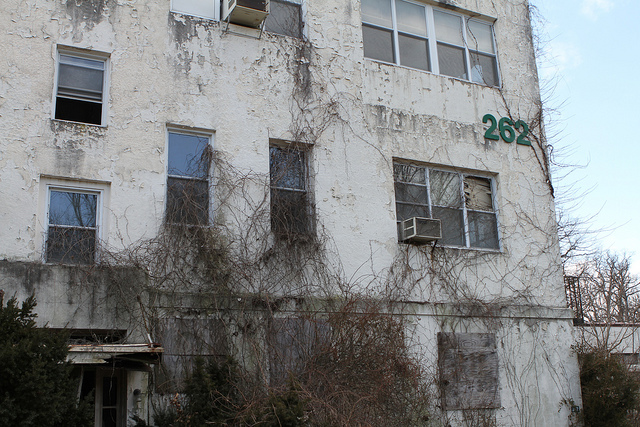
As we reported last month, although Rep. John Mica (R-Fla.) had to resign as chairman of the House Transportation and Infrastructure Committee because of term limits set by House Republican leaders, a reorganization of the House Oversight and Government Reform Committee is enabling him to continue his oversight of GSA—and his attempts to solve the federal government’s real estate problems—as chairman of that committee’s new Government Operations Subcommittee. Mica has vowed to continue to work toward the goal of converting real property assets that are costing taxpayers money to maintain into performing assets to help reduce deficit spending.
At the subcommittee’s first hearing—titled “Failures in Managing Federal Real Property: Billions in Losses”— yesterday (Wednesday, February 27), Mica pointed out the importance of continuing to focus on this issue. “It’s my hope that this can be an action-oriented committee,” he said in his opening remarks, vowing to work with Ranking Member Gerald Connolly (D-Va.) “in a bipartisan effort to find solutions, either legislative or … with agencies to get things moving.” The magnitude of the problem is staggering: nationally, the federal government owns 77,000 structures that have been deemed vacant or underutilized; 14,000 of these have been deemed excess property and the government spends $1.67 billion annually to maintain and operate them.
Connolly, in his opening statement, focused on the importance of working with state and local governments to ensure that federal properties are disposed of and reused in ways that meet the needs of local communities, noting that “the highest and best use of a property, from a dollars and sense view, may not always be in sync with the local government’s priorities” and later reasserting that “we do not want to do harm to local communities in our zeal to divest ourselves of properties we no longer need or want.”
One possible solution to the problem of excess and underused real property, raised yet again at the hearing, is some sort of civilian version of BRAC. GSA Public Buildings Service Commissioner Dorothy Robyn testified that such legislation—which would force the sale of large blocks of excess and underutilized properties—would help solve the problem by giving federal agencies firm deadlines for disposing of those properties. But Robyn—who, as a deputy undersecretary at the Department of Defense, oversaw the military BRAC process—also pointed out that it takes time and money to prepare such properties for sale. In addition, Robyn testified about the measures GSA has undertaken in the past year to improve how the government uses and leases space. Regarding leased space, Robyn noted that “it’s not our first choice, but we have increasingly relied on leased space because it’s often more desirable than owned space that we’re not keeping up to the level of private sector commercial space”—and that it can often be less expensive than retrofitting government-owned space.
Overall, Robyn noted, GSA faces three key challenges: 1) an aging portfolio of buildings, 2) limited capital with which to maintain and repair them and, consequently, 3) an overreliance on private leasing. To address these issues, GSA is focusing on four key areas: 1) rightsizing its portfolio, 2) disposing of excess GSA property (and helping other agencies dispose of theirs), 3) leveraging private capital to deliver better and more efficient space to its customers; and 4) working with the Office of Management and Budget (OMB) and the Federal Real Property Council (FRPP) to improve the Federal Real Property Profile (FRPP).
GAO Director of Physical Infrastructure David Wise also testified at the hearing, summarizing GAO’s recent High-Risk Series update as it pertains to federal real property management and elaborating on challenges associated with managing, maintaining and/or disposing of excess and underutilized property. He added that these challenges are exacerbated by limited communication among federal property-owning agencies and other agencies as well as by inaccurate, out-of-date and/or unreliable information about the condition of those properties. While Wise agreed that a civilian BRAC bill would help, he also said that the federal government must develop a national plan to gather and share property information.
Also testifying was Leonard Gilroy, director of government reform for the Reason Foundation, a nonprofit think tank, who called on the government to develop a “more robust federal real property inventory, a central GIS-based record of government-owned land and assets to serve as a tool for improved asset management and public accountability.” The absence of such an inventory, he asserted, “presents a major challenge for right-sizing the federal property portfolio and causes higher than necessary operating costs and maintenance responsibilities.” He suggested that the federal government could learn from the experiences of several state governments, including Georgia, Oklahoma, and Virginia, in developing real property inventories to track the property they own and determine when and how surplus real property can be divested or used more efficiently.
Mica announced that the subcommittee will hold its first field hearing next Friday (March 8) at Miami-Dade Community College which, he said, has been seeking for many years to acquire an underused federal building located directly across the street. Stay tuned for more news on that front; for links to a webcast of the hearing and written testimony, click here.
